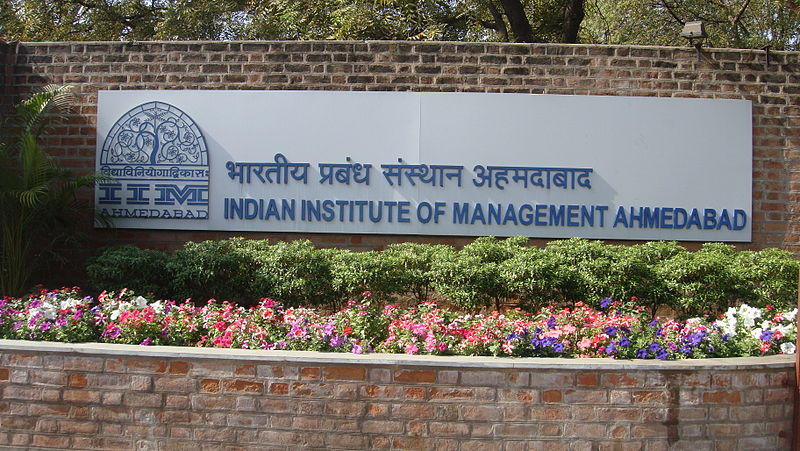IIM Ahmedabad to raze 14 'unsafe' dormitories designed by Louis Kahn
Press Trust of India | December 26, 2020 | 10:08 AM IST | 4 mins read
IIM Ahmedabad has decided to demolish 14 of its dormitories designed by legendary American architect Louis Kahn in the 1960s.

AHMEDABAD: The Indian Institute of Management (IIM)-Ahmedabad has decided to demolish 14 of its dormitories designed by legendary American architect Louis Kahn in the 1960s, saying that they have turned "unsafe" for living due to "dilapidation and structural deterioration". The institute said that these dormitories have suffered damages beyond repairs over the years, due to various reasons including 2001 earthquake and water seepages.
Kahn, a world-famous architect, had been called to Ahmedabad by renowned scientist Vikram Sarabhai to design various buildings. IIM-A was one of the iconic buildings that was built by him in the 1960s. IIM-A director Errol D'Souza, in a letter to the alumni, has shared the photographs of the depleted state of the around 60-year-old iconic brick structures.
"We felt it necessary to keep you informed as we are the custodians of the Louis Kahn buildings that have the potential to inspire future generations. Over the past couple of decades, the buildings have undergone dilapidation and structural deterioration," he said.
"The earthquake at the beginning of the millennium and water seepage through ageing and deterioration of the exposed brick walls has resulted in large cracks in the masonry and periodical detachments of it in fragments. They are unsafe for living," he said.
"We have grappled with questions as to why we should presume that the past is not changeable and why we should assume that future generations will value things in exactly the same way that past generations have. We wondered if it is appropriate for us to colonise future perceptions of living spaces," he added. "It has not been easy to deal with the issues that have come up as we have attempted to restore these buildings," D'Souza said in the 11-page letter.
"As is well-known that concrete encasing was not used by Kahn to protect the embedded reinforcement bars in the brickwork and that has resulted in rusting of the bars and cracks in the brickwork. The bricks used were not the best in class and had an in-built efflorescence. "The bricks used by Kahn were what architects call second class bricks as per IS 3102-1971 with an average compressive strength of 4.89 N/sqmm and with in-built efflorescence," the letter said.
"The pointing that was used to hide the blunt edges of the bricks got damaged and allowed collection of water, which resulted in ingress into the masonry. The earthquake of 2001, among other things, posed challenges to the structural stability of the buildings," it said. "We have attempted to address these issues with the best team of conservation architects anyone could ask for- SNK (Somaya & Kalappa Consultants).
We had invited international restoration consultants Peter Inskip and Stephen Gee to advise us and they suggested we first restore one building and then based on our findings we could proceed to take up further work in other buildings. "We decided to restore Dorm 15 and the Library.
Wherever cracks were found, they were stitched with stainless steel helical bars. Where the cracks were deep, face bricks were removed and fresh brick-work was done. In some cases, like the flat arches on the east faade of the library, they were completely redone with stainless steel reinforcement," he said.
"After completion of the complex work, we were curious about the longevity of the buildings. We appointed an independent structural consultant, who opined that the compressive and tensile stresses in the walls exceed the limits as per the coda requirements of IS:1905-1987 and that the buildings are unsafe," he said.
After long deliberations, it was decided to commit to doing whatever it takes to restore the core of the Louis Kahn buildings the library, the faculty wings, and the classroom complex and the dorms on the periphery of the system of buildings. For the other dorms, however, it was decided to be guided by three imperatives: (1) functional needs, (2) cultural heritage, and (3) available resources, he added.
"After much circumspection, we have decided to restore Dorms 16 to 18. Along with the restored Dorm 15 as you would recollect they constitute the periphery of the built campus and are the first buildings that persons who enter the campus see and understand along with the LKP and associated buildings as the grandeur associated with the work of Kahn. "For the other dorms (1 to 14) that are in the inner core, we will invite architects from across the world to present us options as to how we should go about making new dorms," D'Souza said.
Also read:
- The Week in Education: Board exams, scholarship, reforms
- JIM Jaipur begins registration for PGDM programme 2021
Write to us at news@careers360.com.
Follow us for the latest education news on colleges and universities, admission, courses, exams, research, education policies, study abroad and more..
To get in touch, write to us at news@careers360.com.